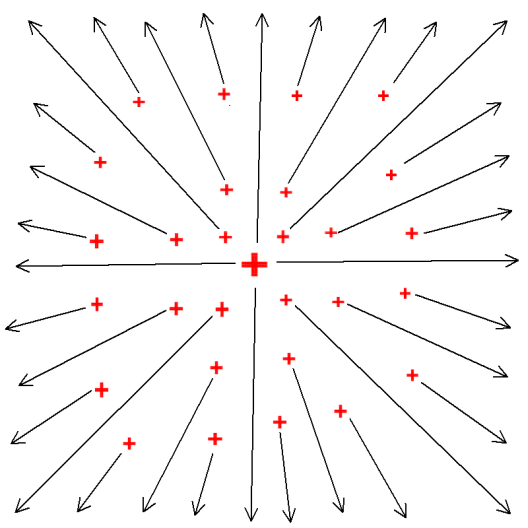Lines of electric field are used now as a visual aid but in the past, they were "counted" and electric flux was a measure of the number of lines passing through a given area.
In your example, electric field lines start on a positive charge and move radially outwards from the centre of the charge distribution (and end up at infinity).
Since the radial electric field has a constant magnitude the electric flux (number of field lines) through a given area is proportional to the area.
Let me try and illustrate what happens visually but the problems are that your example requires one to consider three dimensional space and I am not so good at drawing diagrams.

What my diagram is trying to show is two areas which are part of spheres with radii $R$ and $2R$ and hence areas $A$ and $4A$.
If one field line, starting somewhere in the sphere of charge of radius $R$ passes through area $A$ then four field lines must pass through the area which is four times larger, $4A$.
Thus the field line which passed through area $A$ would continue on and pass through area $4A$ and then three extra field lines, starting on positive charges between the two areas, would pass through area $4A$.
In terms of Gauss's law, there is three times more charge between $R$ and $2R$ as there is between $0$ and $R$.
Hence field lines equivalent to the four units worth of charge pass through area $4A$ whereas field lines equivalent to one unit worth of charge pass through area $A$.
Perhaps you can get further visualization by imagining that starting with the one field line passing through area $A$, two field lines will pass through area $2A$ at $\sqrt 2R$, and three field lines will pass through area $3A$ at $\sqrt 3R$.
Then you might start with two field lines passing through $A$ and subdivide the volume between $R$ and $2R$ appropriately as well as the volume between $0$ and $R$?


